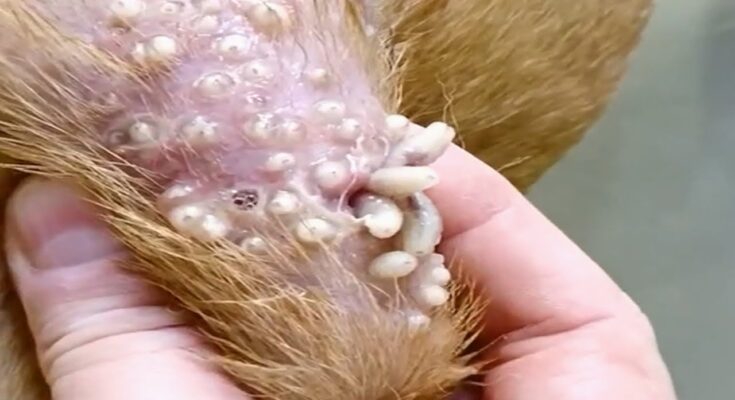Mango worms, or Cordylobia anthropophaga, are parasitic larvae commonly found in tropical and subtropical regions, especially in Africa. They infest mammals, including dogs, by burrowing under the skin, causing painful sores. Preventing mango worm infestations in dogs involves several proactive measures to protect your furry friend from discomfort and potential health issues.
- Keep Bedding and Environment Clean: Mango worms are often found in the soil, especially in areas contaminated with feces or decaying organic material. They lay their eggs in soil, and dogs can easily pick up these eggs, which then hatch under their skin. Keeping your dog’s bedding and resting areas clean is crucial. Wash their bedding weekly with hot water, which kills any eggs or larvae that may be present. Dry bedding thoroughly in sunlight if possible, as the UV rays also help eliminate potential pests.
- Regular Grooming and Inspections: A close inspection after outdoor activities can help spot early signs of an infestation. Check your dog’s skin for lumps or swelling, especially if they frequently roll around in dirt or play outdoors. Regular grooming is vital, as it helps you spot any unusual bumps or lumps, which could indicate mango worms or other parasites. Use a fine-toothed comb to brush through the fur and carefully check the skin, particularly around sensitive areas such as the belly, paws, and neck.
- Apply Anti-Parasitic Products: There are topical and oral medications available to protect against various parasites, including mango worms. Consult your veterinarian for a suitable anti-parasitic treatment that’s effective in your region. Products containing insect growth regulators (IGRs) or insecticides like permethrin are effective in keeping mango worms at bay. Be sure to apply these treatments as directed, especially if your dog spends a lot of time outdoors. Some flea collars can also deter mango worm infestations, but check with your vet before using them, as not all products are safe for every dog.
- Limit Outdoor Exposure in High-Risk Areas: If you live in or are visiting an area known for mango worm infestations, limit your dog’s exposure to high-risk zones. Avoid allowing them to dig in soil or roll around in dirty areas, as mango worm larvae often latch onto dogs from contaminated soil. In high-risk areas, consider using dog booties or protective clothing to reduce the risk of larvae coming into contact with the skin.
- Seek Immediate Veterinary Care for Infestations: If you notice small lumps or sores on your dog, seek veterinary care immediately. Mango worm larvae must be removed manually by a vet to avoid rupturing them inside the skin, which can cause infections. Timely treatment prevents the infestation from spreading and keeps your dog comfortable.By maintaining a clean environment, checking for early signs, using preventative products, and managing outdoor time wisely, you can significantly reduce the risk of mango worm infestations in your beloved dog.
